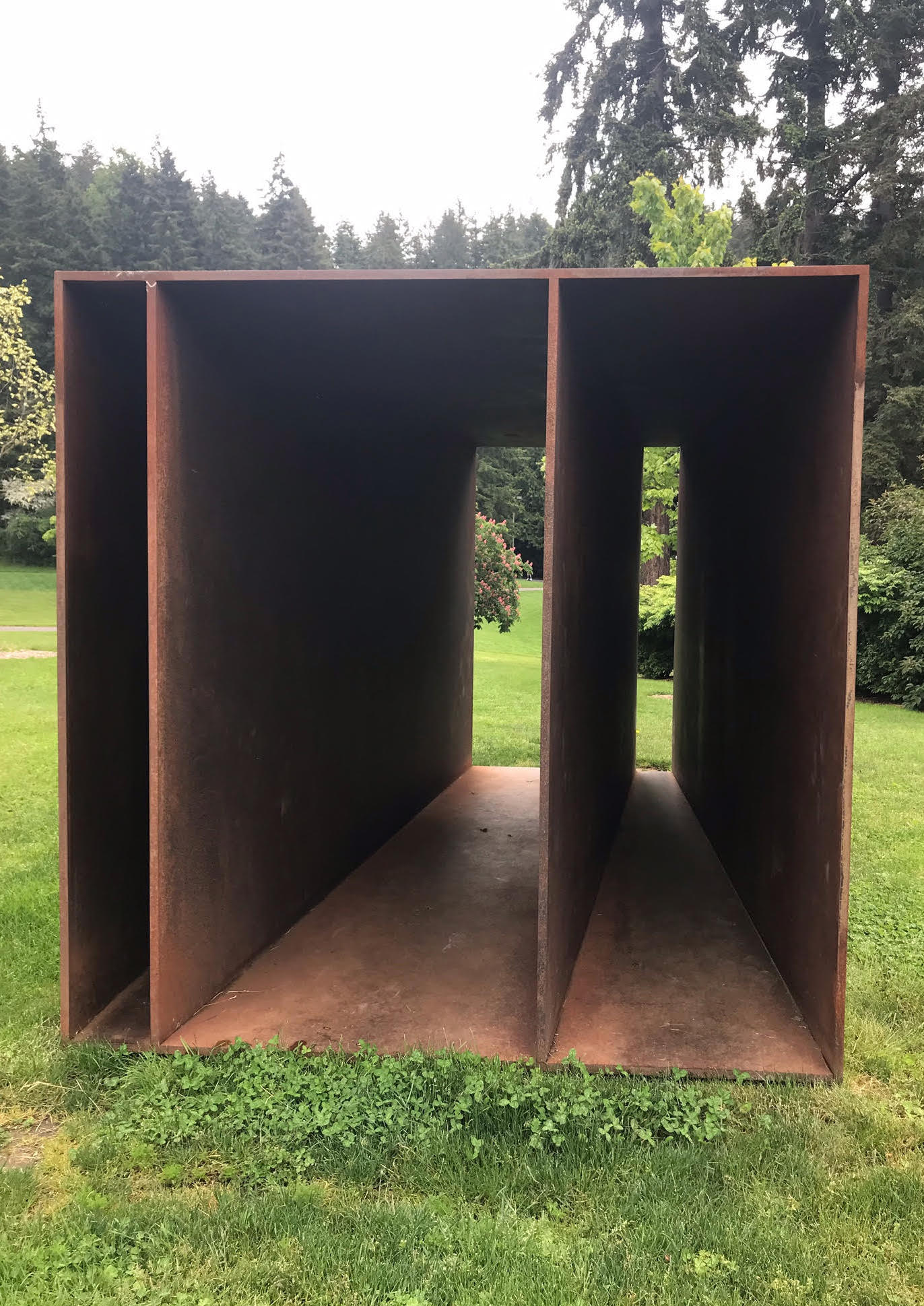
This is an image of a compelling sculpture developed by Donald Judd that remains untitled. It sits on the Western Washington University campus and has done so since 1982. It is a minimalist 7’ x 7’ x 14’ Corten steel box with two open ends and two angled plates that subdivide the interior of the box. Judd’s work is minimal and has been described as rigorously democratic, lacking any clear hierarchy. This particular piece is one in a series of works that explores both the interior and exterior, the subjective and objective. This series is like architecture in that it is simultaneously contained within space and contains space. What makes the work so radical is that up to this point sculpture had traditionally been solid or monolithic, often carved out of stone. At the time, Robert Smithson described Judd’s series of boxes as elusive in what they capture, hold and what is missing.
In opposition to the rational modern tendency to endlessly break things apart to study and understand its components, Judd was charting a course in the opposite direction. He sought to develop sculptural works that were wholistic — pieces that offered an un=fragmented, unified but perhaps contradictory and ambiguous experience. Works, for example, that simultaneously embodied both order and disorder. The ultimate goal of the box series was to develop a material structure that would intensify the experience one has with the immediate surroundings. Therefore, where and how Judd placed this work in the landscape was of deep concern to him and a matter of significant consideration. He felt that no space was “neutral” and that spaces were either created indifferently or with knowledge — their meaning was developed with ignorance or with knowledge.
